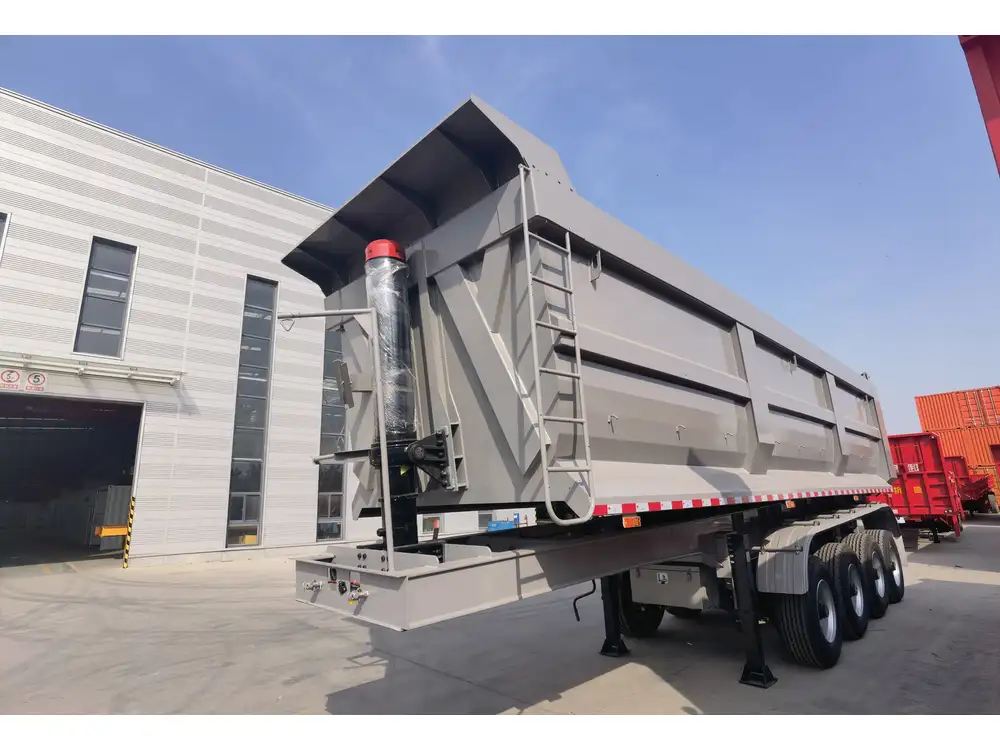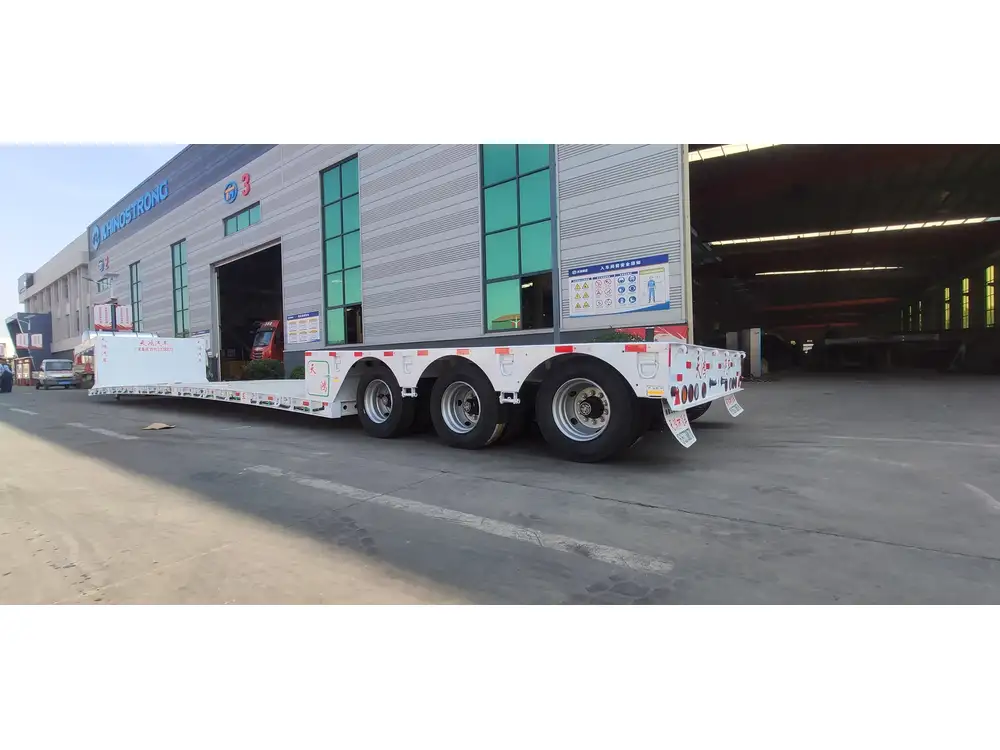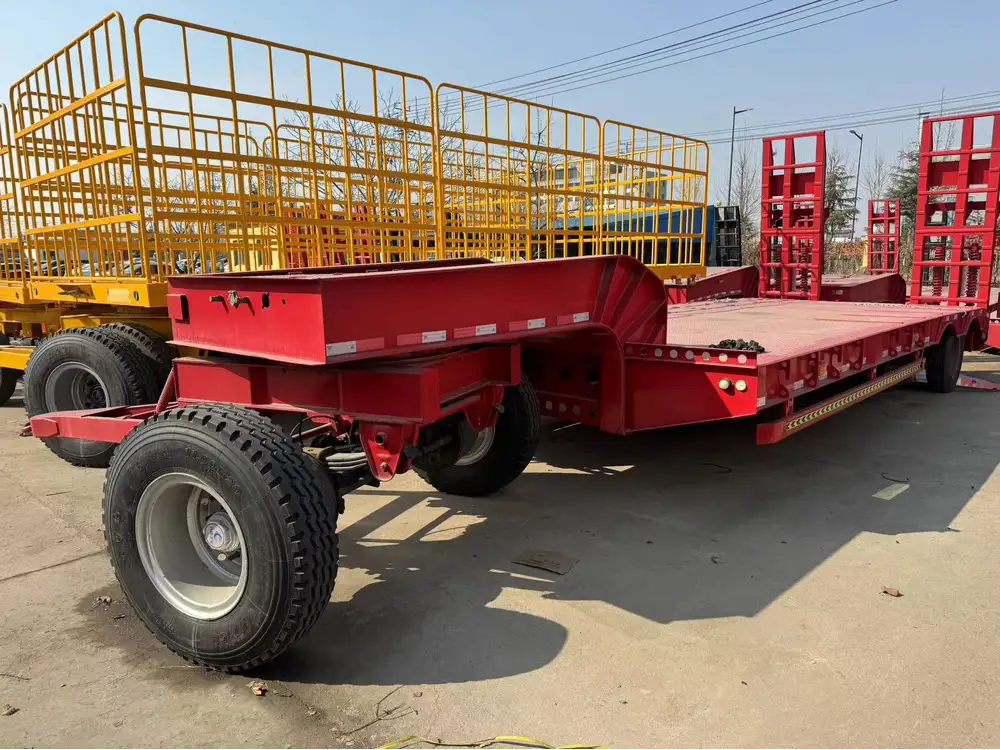Introduction to 40ft Skeletal Trailers
In the world of freight transportation, efficiency and versatility are paramount. Among the various types of semi-trailers available, the 40ft skeletal trailer stands out as a particularly essential asset for logistics and transportation companies. Designed primarily for the seamless transportation of shipping containers, these trailers are lauded for their lightweight yet robust construction, facilitating the transfer of goods across long distances. This article delves into the numerous attributes, practical applications, and considerations surrounding the adoption of 40ft skeletal trailers.
What is a 40ft Skeletal Trailer?
At its core, a skeletal trailer is a type of flatbed designed specifically for the transportation of intermodal shipping containers. Here are some defining characteristics:
Design Structure: Typically, the skeletal trailer features a minimalist design that prioritizes strength without unnecessary weight. Constructed largely from high-strength steel, these trailers have an open framework which allows for easy loading and unloading of containers.
Capacity: A standard 40ft skeletal trailer can accommodate a range of container lengths, but it is predominantly designed for the standard 20ft and 40ft containers. This flexibility is crucial in an industry where container dimensions can vary.
Low Deck Height: The lower deck profile of a skeletal trailer enhances its stability and decreases the center of gravity, contributing to improved safety during transportation.

Benefits of Using 40ft Skeletal Trailers
1. Cost-Effectiveness
The skeletal design significantly reduces the trailer weight, allowing for a greater payload without exceeding weight limits. This increase in cargo capacity translates directly into cost savings per load. Additionally, the reduced material usage contributes to lower initial costs.
2. Enhanced Maneuverability
The compact design of the 40ft skeletal trailer enhances maneuverability, making it suitable for urban deliveries and confined spaces. This is crucial for logistics companies that operate in a variety of environments, from bustling cities to remote areas.

3. Versatile Applications
One of the key advantages of the 40ft skeletal trailer is its adaptability:
Table 1: Applications of 40ft Skeletal Trailers
| Application | Description |
|---|---|
| Intermodal Transport | Efficient for transporting containers across rail and road. |
| Construction | Used for transporting modular units and equipment. |
| Agricultural Freight | Ideal for transporting large quantities of goods like grain or produce. |
| Logistics Warehousing | Flexible for storing and moving containers in warehousing environments. |
4. Durability and Maintenance
The use of high-strength materials ensures that skeletal trailers can withstand the rigors of constant transportation. Furthermore, maintenance is straightforward, with parts easily accessible for quick repairs or replacements, ensuring minimal downtime.

Factors to Consider When Choosing a 40ft Skeletal Trailer
In choosing the right 40ft skeletal trailer, several critical considerations come into play:
1. Load Capacity and Regulatory Compliance
Understanding the maximum load capacity is vital. Exceeding weight limits can lead to fines and safety hazards. Ensure that your trailer complies with local and international regulations governing transportation.
2. Compatibility with Equipment
Ascertain that the chosen skeletal trailer is compatible with your existing fleet of vehicles and meets your operational requirements. Consider additional features, such as:
- Container Locks: These are essential for securing the container.
- Reinforced Axles: They provide better support for heavy loads.
- Brake Systems: Hydraulic or air brake systems enhance safety.

3. Manufacturer Reputation
Partnering with a reputable manufacturer ensures quality and reliable customer service. Investigate customer reviews and the manufacturer’s warranty policy.
4. Customization Options
Many manufacturers offer customizable features, including adjustable height settings, additional storage options, and enhanced safety features. The ability to tailor the trailer to meet specific operational needs can enhance overall efficiency.
Comparative Analysis: 40ft Skeletal Trailers vs. Other Semi-Trailer Types

Similarities and Differences
Understanding how 40ft skeletal trailers compare to other types of trailers can guide better decision-making:
Table 2: Comparison of Trailer Types
| Feature | Skeletal Trailer | Flatbed Trailer | Standard Container Trailer |
|---|---|---|---|
| Purpose | Container transport | General cargo transport | Container-specific transport |
| Weight | Light | Moderate | Heavy |
| Load Variation | Limited to containers | Broad (various items) | Limited to standard containers |
| Ease of Loading/Unloading | High (via fork-lift) | Moderate | High (via crane) |
| Maneuverability | Very High | Moderate | Low |
Detailed Insights
Functionality: While skeletal trailers primarily serve container transport, flatbed trailers offer versatility allowing the transport of different cargo types. However, this versatility comes at the cost of increased weight and regulatory hurdles.
Operational Cost: Skeletal trailers generally incur lower operational costs due to reduced fuel consumption owing to their lightweight structure. Flatbed trailers may face higher operational costs, especially on longer hauls.
Loading Mechanism: The loading process for skeletal trailers is optimized for rapid turnaround, making them ideal for environments requiring high efficiency and quick turnaround times—attributes that companies in logistics prioritize.

Maintenance Tips for 40ft Skeletal Trailers
Proper maintenance of a skeletal trailer is essential to ensure reliability and longevity. Regular maintenance routines can prevent costly repairs and enhance safety. Here are critical maintenance tips:
1. Regular Inspections
Conduct thorough inspections focusing on:
- Brakes: Ensure that braking systems are functioning efficiently.
- Tires: Examine tires for wear and proper inflation.
- Frame and Suspension: Inspect for signs of damage or rust.
2. Keep Records
Maintain a detailed maintenance log that documents inspections, repairs, and any modifications made to the trailer. This can enhance resale value and ensure compliance with regulations.

3. Seek Professional Support
Engaging professional maintenance services can often lead to a more thorough inspection compared to casual checks done by drivers.
Conclusion: Investing in a 40ft Skeletal Trailer
In summary, the 40ft skeletal trailer represents a durable, cost-effective, and versatile option for businesses engaged in shipping and logistics. Its design fosters efficient container transportation while also offering significant operational advantages. When selecting a skeletal trailer, consider factors such as load capacity, compatibility, and manufacturer reputation to make an informed decision. Moreover, maintaining the trailer properly ensures that it serves its purpose effectively for years to come.
With intermodal transport growing more critical in our global economy, the role of the skeletal trailer cannot be overstated. It stands as a testament to innovation in the logistics and transportation sectors, propelling businesses forward as they navigate the complexities of efficient cargo movement. Embracing this technology can undoubtedly streamline operations and enhance profitability in a competitive market.



